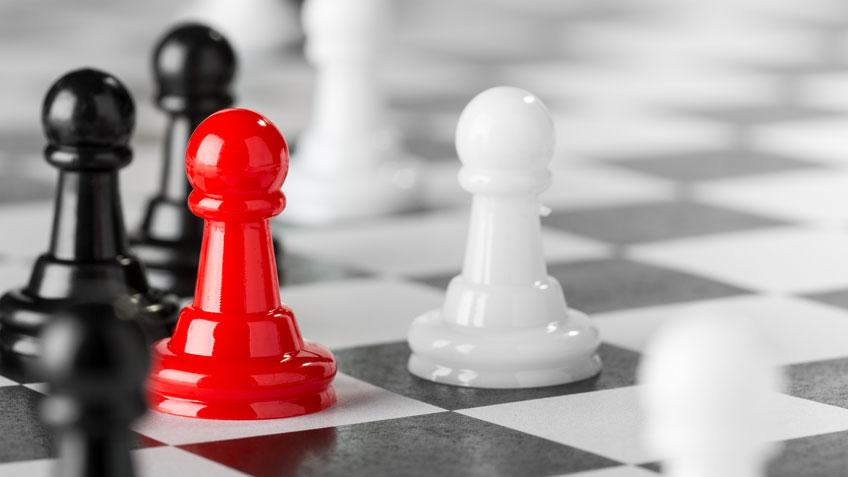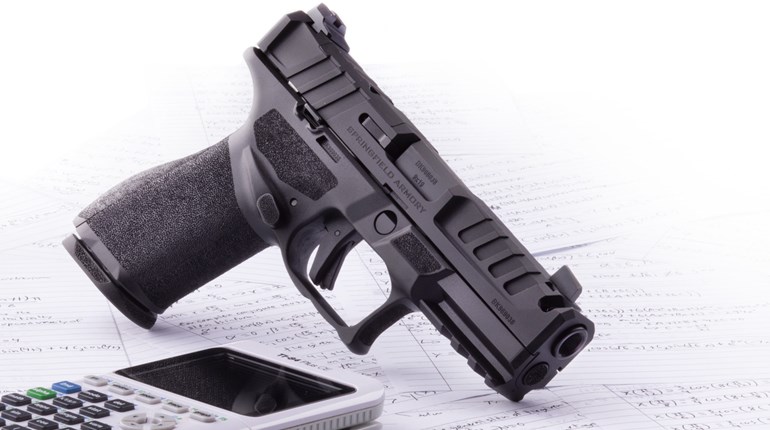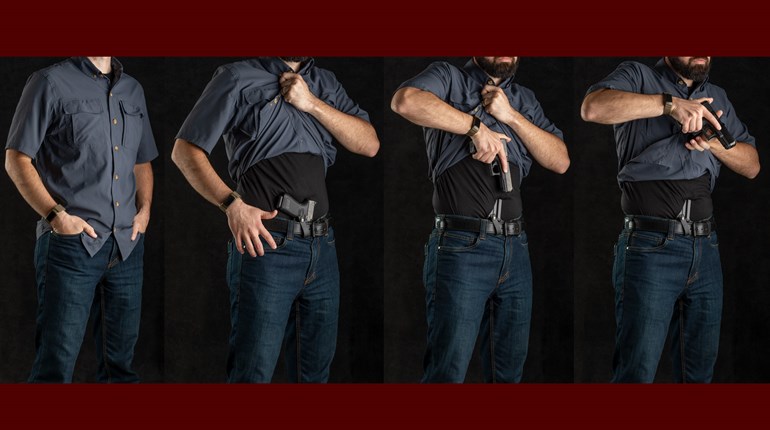
For many people who are taking up concealed carry, the first thing I suggest is to consider the worst-case scenario. If we had to define what a worst-case scenario would look like, start with being surprised. If that wasn’t challenging enough, you could start from positional disadvantage, such as on your back, or simulate being injured to further complicate the situation and add more realism. What are the advantages to considering the worst-case scenario? First, it brings about a certain type of urgency—one that might change the way you look at your training, practice and equipment. An additional reason is overcoming fear. The more exposure to stress and fear you get early on, the more familiar you become and the better you handle them. For me, however, the biggest reason to consider the worst case is to avoid complacency and thereby forge a winning mindset.

A surprise attack has all the characteristics of a worst-case scenario. You didn’t see it coming because you were preoccupied or not paying attention to your surroundings. As a result, the initial contact puts you at a disadvantage through reduced options, possibly injuries and likely positional disadvantage. The event happened so quickly, your brain has a hard time processing in real time. It is even possible to create a false reality to cope with a sudden, unexpected attack, further complicating matters. Training and practicing are the rungs on your ladder to climb out of the surprise-attack pit.
Between a surprise and planned attack, the surprise attack is where I prefer to start in a training package. If you can manage the surprise attack, working from the time disadvantage to create a positive outcome, you will better manage just about any other type of attack. At the core of a surprise attack is lack of awareness. The first obstacle to overcome is acknowledging a surprise attack can happen to anyone—even the best in the business cannot maintain high states of alertness for extended periods. With this acknowledgment, you can work to reduce or limit distractions. When you can filter out those distractions, like your smartphone, music in your earbuds or even daydreaming, you will see your environment more clearly. That will allow you to break down your defensive zones.
Think of defensive zones as concentric bubbles around you, where distance is referenced in ranges from far, close and contact. At the far range, the potential attacker(s) is far enough away that it would take significant movement and time for them to reach you. This could be across the street or down a grocery aisle. At close range, the suspect is near enough that within a few quick steps, they could be upon you and able to assault you with a knife or impact weapon. This could be from the other side of your car or a few yards down the road. Contact range implies the potential attacker(s) is within arm’s reach, if not already physically in contact with you. In a surprise attack, you can expect close range at the farthest, but contact range is most likely. The problem we face is that, as we are social creatures, people will move in and out of these zones constantly throughout your day.
Another way to consider these zones is in your ability to respond with your concealed firearm. If the suspect is close, you may need to think about creating distance—and therefore time—before you can produce your firearm. Someone at close or contact range makes gaining access to your firearm a risk. The drawstroke is a series of movements that begins with the movement of your hands and ends with the presentation of the gun. Each of these movements must be performed to a minimum standard at maximum speed. Adding an obstruction, such as your cover garment, adds time. The ultimate goal for the concealed-carry practitioner should be the fastest drawstroke with fewest errors, and this requires practice.
Even if you had a lightning-fast drawstroke, however, you are still starting after the suspect has initiated the attack. The judicious use of deadly force has strict criteria to be met before you can draw your firearm, much less use it. The time disadvantage in determining whether or not you can legally go to your gun is but one factor that forces the armed citizen to play a game of catch up in a surprise attack. Training and practice will give you the means to improve your drawstroke. Learning the fundamentals of a fast drawstroke from concealment should be your top training priority for dealing with a surprise attack. Your next task is to practice from as many different types of cover garments as you might wear. Once you have achieved a high level of proficiency with your drawstroke, you need to work from positions of disadvantage and under stress. This type of programing will expose weak areas you can improve. Even if you haven’t performed the exact movement or technique required in a given attack, you will likely have performed something similar enough to adequately fill the gap under stress.
Though you may achieve a high level of competency, the high stress of an attack combined with working from a disadvantage will still degrade your skills. How much degradation is hard to quantify and differs from person to person, but what’s guaranteed is you won’t perform as well while being attacked as you will on a square range. Stress is wicked, and it affects each of us differently. The more stress you are exposed to in training, the more resiliency you can expect if you are attacked. Stress inoculation is hugely important for two main reasons. First, it gives you a chance to see how your skills could degrade, motivating you to shore up those weak areas. The other reason to work under stress is to build confidence. The confidence you gain from some knowledge of how you may react to stress can help you better cope with and handle a real situation.

While the worst-case scenario is a surprise attack, proper awareness may help you turn that surprise attack into what I call the planned attack. A concealed-carry practitioner with basic skills has a better chance to prevail in a planned attack because they should see the pre-fight indicators or cues. The planned attack may be visible earlier, making you able to pick it up at farther ranges because you are paying better attention. In reality, even a surprise attack is ultimately a planned attack from the attacker’s point-of-view. The suspect has obviously planned to attack you, but you were not able to see his nefarious actions until he was upon you. At its most-basic level, this is the biggest difference between the two types of attacks—one you can see coming, partly at least, while the other you could not.
When you can see an attack coming or have a little warning, you have many more options at your disposal. It all starts with an assessment of your environment. You should be looking to see what belongs there, so you can understand what doesn’t belong. Your next step is developing an escape plan. Part of your escape plan is looking for cover, exits and even weapons of opportunity. As distance starts to shrink, consider the suspect’s actions. If you are moving to your exit, have they vectored in on your movement? Are they communicating with you and if so, what is their tone? If they are not communicating with you, pay attention to their hands. Remember, it is the hands that cause harm, so where are they and what are they doing or holding? Even a benign item such as a cell phone can be an impact weapon if wielded with enough force. Lastly, what are they looking at and how intensely? If you see them looking around for potential witnesses, you might want to move quicker to your exit. If they are fixated on you and only you, it might be a good time for assertive and firm verbal commands.
Verbal commands are an important part of your defensive repertoire. An easy way for your commands to have the best chance of being followed is to keep them clear and concise. Avoid vague or long-winded phrases. Keep it simple, to the point and make them action related. It is advisable to rehearse your contact phrase in advance. This is a great time to bring a family member or friend into your training. The more you practice your contact phrase—with both positive and negative outcomes—the better you will be able to handle a real-world scenario. Arguably, the most important point to consider is not to give a new command until your previous command has been followed. If you fail to establish control through your first command, it is unlikely future verbal commands will be of significant value. All the more reason to role play. The most-important consideration when it comes to verbal commands is to not give a verbal command unless you are fully committed to carrying it out. You need to think first before you commit yourself to something that could be inappropriate, unsound or unlawful.
Even the best-trained, most-experienced operators get caught off guard. The best you can do is to limit your distractions to pay attention to what matters. You will be reactionary, so learning to play catchup on the resultant time (and likely distance) disadvantage is important. Your skill level will decrease under stress, so train and practice as often as possible. Set goals for developing a smooth, fast drawstroke to deliver first-round hits. As you start to understand range bubbles, push out to the far range and routinely assess your environment. It is easy to be surprised, so you should train to minimize the occurrences in a self-defense setting. That will create the winning mindset we want.






































